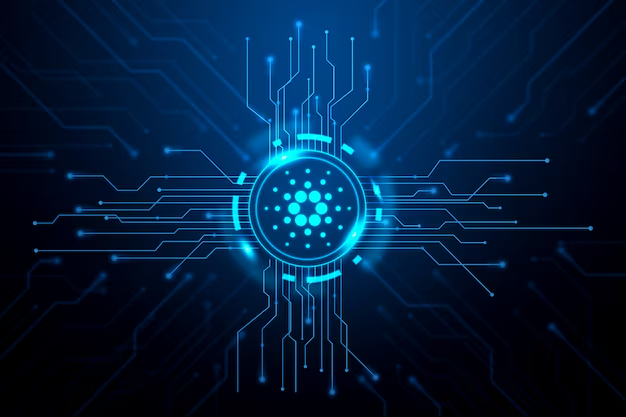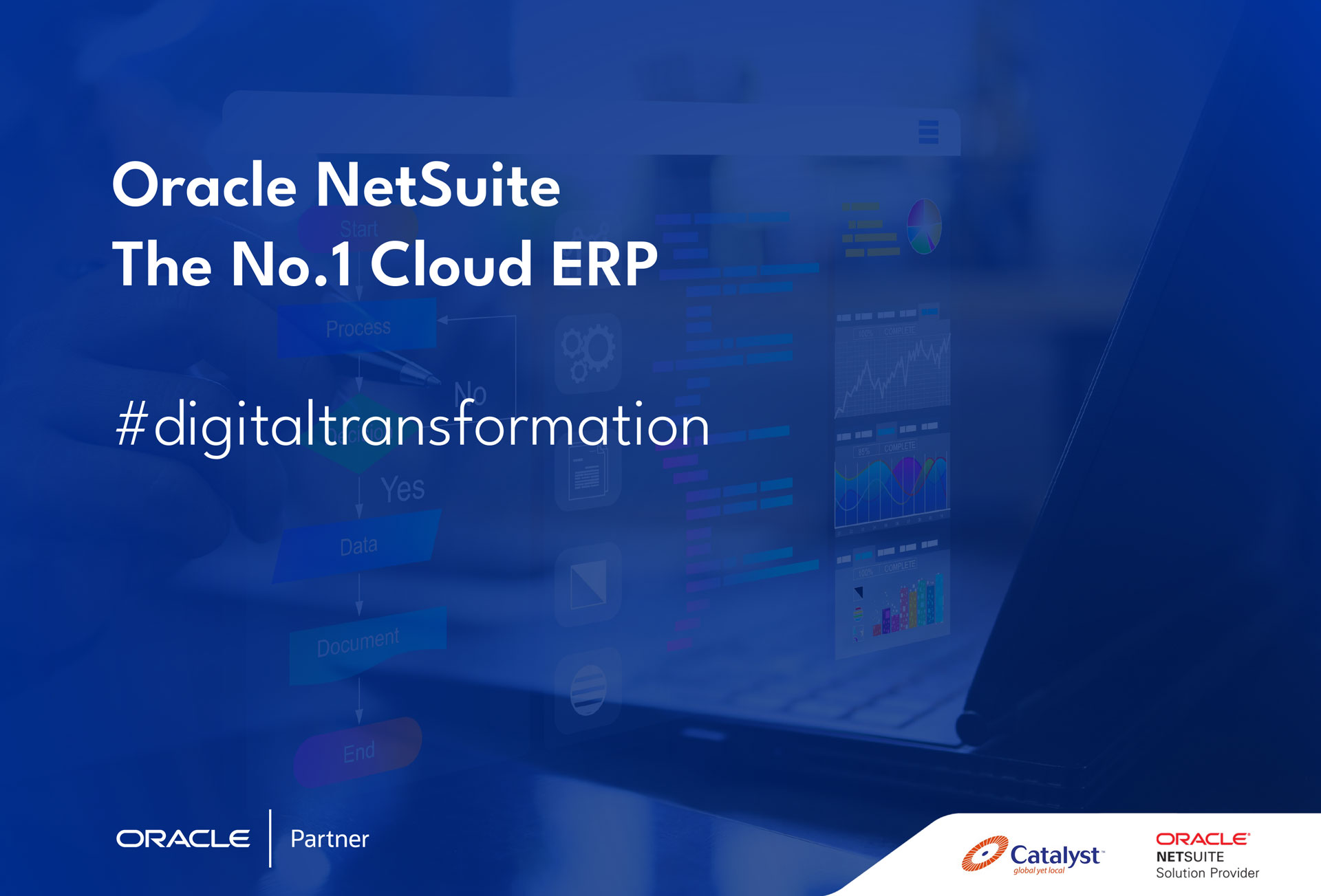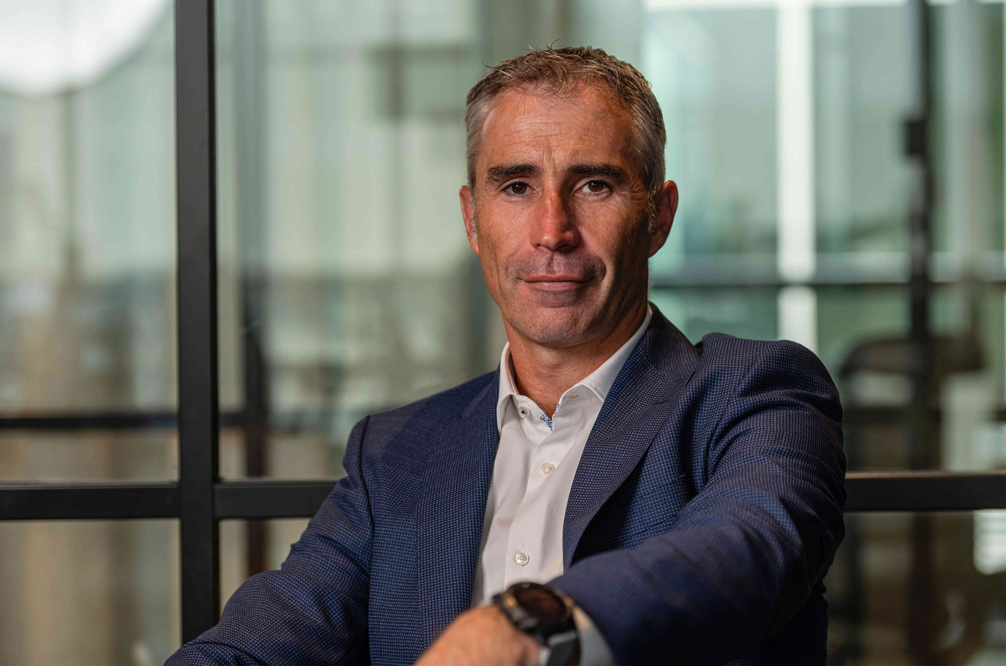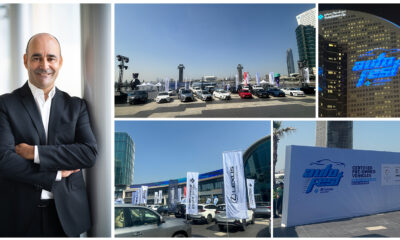Tech Reports
UAE-focused CIO Report Reveals Complexity of Technology Stacks Continues to Rise as Multicloud Adoption Accelerates

98% of technology leaders in the UAE find that traditional AIOps models deliver limited value, leaving teams unable to tackle the data overload
By: Bernd Greifeneder, SVP, CTO, Dynatrace

Dynatrace, the leader in unified observability and security, today announced the findings of an independent global survey of 1,300 CIOs and technology leaders in large organizations, of which 150 respondents were from the Middle East, which includes the UAE. The research reveals that organizations are continuing to embrace multicloud environments and cloud-native architectures to enable rapid transformation and deliver secure innovation. However, despite the speed, scale, and agility enabled by these modern cloud ecosystems, organizations are struggling to manage the explosion of data they create. These research findings underscore the need for a mature AI, analytics, and automation strategy that moves beyond traditional AIOps models to drive lasting business value. The report: The state of observability 2024: Overcoming complexity through AI-driven analytics and automation strategies is available for download.
UAE-based findings from the research include
- 98% of organizations say the complexity of their technology stack has increased in the past 12 months, and 72% say it will continue to increase.
- Technology leaders say multi-cloud complexity makes it more difficult to deliver outstanding customer experiences (92%) and makes applications more difficult to protect (88%).
- 97% of technology leaders say cloud-native technology stacks produce an explosion of data that is beyond humans’ ability to manage.
- On average, organizations in the UAE use 11 different monitoring and observability tools to manage applications, infrastructure, and user experience.
- 92% of technology leaders say the number of tools, platforms, dashboards, and applications they rely on adds to the complexity of managing a multicloud environment.
“Multicloud environments have become mandatory for modern organizations, bringing the speed, scale, and agility they need to deliver innovation,” said Bernd Greifeneder, CTO at Dynatrace. “However, as the footprint of their cloud-native architectures continues to expand, organizations are also seeing their technology stacks growing in complexity. A vast array of different cloud platforms and services support even the simplest digital transaction, and the huge amount of data these environments produce makes it increasingly difficult to monitor and secure applications. As a result, critical business outcomes like customer experience are suffering, and it is becoming more difficult to protect against advanced cyber threats.”
Additional findings include
- 83% of technology leaders say manual approaches to log management and analytics cannot keep up with the rate of change in their technology stack and the volumes of data it produces.
- 88% of technology leaders say the time their teams spend maintaining monitoring tools and preparing data for analysis steals time from innovation.
- 85% of organizations have adopted AIOps to reduce the complexity of managing their multicloud environment.
- 98% of technology leaders say probabilistic machine learning approaches have limited the value AIOps delivers due to the manual effort needed to gain reliable insights.
“Cloud-native architectures have unleashed a firehose of data, challenging IT, development, security, and business teams,” continues Greifeneder. “Without the ability to transform this diverse data into real-time, contextually relevant insights, these teams struggle to understand what is happening in their environment and lack the answers needed to solve issues quickly and decisively. While many organizations turn to AIOps, they often encounter limited value due to reliance on probabilistic methods, which can be imprecise and time-consuming to implement. To overcome the complexity of modern technology stacks, organizations require advanced AI, analytics, and automation capabilities. By unifying diverse data, retaining its context, and powering analytics and automation with a hypermodal AI that combines multiple techniques, including causal, predictive, and generative AI, teams can unlock a wealth of insights from their data to drive smarter decision-making, intelligent automation, and more efficient ways of working.”
Methodology
This report is based on a global survey conducted by Coleman Parkes and commissioned by Dynatrace of 1,300 CIOs, CTOs, and other senior technology leaders involved in IT operations and DevOps management in large enterprises with more than 1,000 employees. The sample included 200 respondents in the U.S., 100 in Latin America, 600 in Europe, 150 in the Middle East, and 250 in Asia Pacific.
Tech Reports
Digitech’s Digital Transformation Odyssey in Egypt with Catalyst

An Oracle NetSuite Go-Live success story
In the vibrant city of Cairo, Digitech, a subsidiary of the renowned Noventiq Group, embarked on a transformative journey to revolutionise its operations in Egypt and align with the Noventiq standards of excellence.
Client Background
Before its acquisition by Noventiq, Digitech had relied on a manual, Excel-based approach to managing its business processes. This legacy system hindered efficiency and scalability, making it imperative for Digitech to embrace digital transformation.
Challenges Faced
- Transition from Manual to Automated Processes: Digitech’s primary challenge was to seamlessly migrate from manual, Excel-based processes to a fully automated system.
- Localization and Compliance: Operating in Egypt presented dual challenges of complying with local regulations and adhering to Noventiq’s industry standards.
- Training and Empowerment: With no prior experience in system automation, Digitech’s team required extensive training to equip them with the necessary skills for the transition.
The Solution
Digitech partnered with Catalyst, a leading NetSuite Solution Provider, to design and implement a comprehensive solution that addressed the company’s unique needs. The focus was on achieving localization as per Egyptian regulations while upholding Noventiq industry standards and best practices.
Go-Live Milestone
After months of meticulous planning and implementation, Digitech achieved a successful Go-Live, marking a pivotal moment in their digital transformation journey. This milestone signified Digitech’s embrace of automation and a transformative shift in its business operations.
Benefits Realised
- Seamless End-to-End Automation: Digitech achieved seamless end-to-end automation across its operations, eliminating manual bottlenecks and enhancing overall efficiency.
- Streamlined Billing and Compliance: Integration with e-Invoicing streamlined Digitech’s billing processes, ensuring compliance with Egyptian tax authorities, and reducing the risk of errors.
- Scalable and Replicable Solution: With subsidiaries in multiple countries, Digitech now has a scalable and replicable success story that can be applied to future expansions into other regions.
Results Achieved
Digitech’s digital transformation journey yielded transformative results:
- Enhanced Operational Efficiency: Automation significantly boosted operational efficiency, enabling Digitech to focus on innovation and client satisfaction.
- Secure and Stable Operational Environment: Localization efforts ensured compliance with Egyptian regulations, providing a secure and stable operational foundation.
- Replicable Success in Multiple Markets: The success in Egypt lays the groundwork for Digitech to replicate the achievements across its global subsidiaries.
Future Outlook
Armed with a fully automated system and a future-ready infrastructure, Digitech is poised for sustained growth and continued innovation. The success story in Egypt serves as a testament to Digitech’s commitment to excellence and sets the stage for further advancements in the ever-evolving landscape of digital transformation.
Catalyst: Your Transformation and Protection Partner in a Globalised World
Catalyst, a Silicon Valley-based technology consulting firm with a global presence in over 15 EMEA countries, empowers organizations to thrive in today’s dynamic landscape. We specialize in Business Applications, Business Platforms, Cybersecurity, and Cloud Adoption, guiding our clients through successful transformations and ensuring their digital landscapes remain secure.
Tech Reports
74% of UAE employees agree that AI is the biggest opportunity for future of workforce

While optimistic about value of technology and digital skills, 54% acknowledged that their formal education did not prepare them for today’s working world
ServiceNow today released the findings of a new study that explored employee sentiment on the impact of technology and digital skills on their career and the future of the workplace. 79% of surveyed UAE employees agreed that digital skills give people an edge in business and an almost equal number (84%) said new technologies are helping them reach their potential.
The study — which surveyed 5,500 working adults (18+) in the UAE, France, Germany, Ireland, Italy, Sweden, Switzerland, the Netherlands and the UK — also highlighted that UAE employees are far more positive about the impact of AI on their jobs, compared to their EMEA peers. Almost three quarters (74%) — a whole 26 percentage points higher than the EMEA average — agree that AI is the biggest opportunity for the future of the workforce. An equal number agreed that AI will boost productivity in the workforce, while only 52% of EMEA employees shared the same sentiment.
Although UAE employees are largely optimistic about the value of tech and digital skills, half of workers (54%) acknowledged that their formal education did not prepare them for today’s working world and 82% also noted that additional education on technology/digital skills would help them feel more confident about their career prospects. As a consequence, seven in ten workers in the UAE (72%) recommended that formal education on AI should be mandatory before the age of 18 and a similar proportion (71%) think the same about coding. 72% also agreed that there needs to be a standardized qualification for digital skills that employers can recognize. Speaking of employers, 81% of UAE employees said businesses have a responsibility to promote the development of AI skills in the workforce.
Commenting on the findings from the study, Mark Ackerman, Area VP for Middle East & Africa at ServiceNow said, “There are two key takeaways for me. For one, while it is clear that employees in the UAE welcome more digital technologies in the workplace, organizations need to be thoughtful when making these investments — an approach that unifies and simplifies processes, will ensure that technology works for employees and customers. The second is that organizations have to make a commitment to providing their employees with not just a career path, but also with the re-skilling and up-skilling opportunities and training programs that will enable them to be their best selves and be valuable contributors to the company and broader community.”
News
Are biometrics the backbone of personal security in smart cities?

By: Alexander Migutsky, Advanced Technologies Specialist, Positive Technologies
Alexandra Murzina, Head of Advanced Technologies Department, Positive Technologies
What makes smart cities so fascinating is the level of personalization the ecosystem promises across essential daily staples including work, transport, payments, and complete control over applications at home.
With immeasurable IoT applications and effective use of big data analytics, smart cities will emerge a phenomenon that seeks to make us question how we ever managed to operate any other way.
Achieving this level of personalization won’t be easy though. A larger interconnected network requires paths to identify users so they can tailor their experiences to themselves. Whether it be biometric ID cards or authentication portals, users should be able to authenticate themselves and connect to networks using their personal information.
Biometrics are widely used in enterprise security, access control, and banking operations, with facial recognition and fingerprint authentication systems now commonplace in companies, subways, stores, and restaurants.
The demand for biometric technologies is being driven, among other things, by the increasing adoption of biometric systems in the automotive and consumer electronics industries.
But are biometrics geared to provide comprehensive support to smart city infrastructure?
According to Fortune Business Insights, the global biometric system market size is projected to reach USD 76.70 billion by 2029.
However, there are still safety concerns about how these systems operate and make decisions; questions arise – Exactly how safe are these systems? How do they work under the hood, how do they make decisions?
Positive Technologies’ in-house team of cybersecurity experts conducted a white hat investigation focusing on physical and cyber threats to machine learning systems, including attacks that aim to compromise system confidentiality and obtain data.
The goal of the investigation was to discover gaps within biometric security systems leading up to their inevitable integration into smart infrastructure. We hope that our findings can shed some much needed light upon how the industry can collectively ensure seamless connectivity and functionality within biometric authentication systems supporting smart infrastructure.
During our investigation, we took apart two biometric devices and examined their internal electronics.
Device 1
The first device is expensive and uses advanced technology with the latest biometric algorithms. It has a depth camera, two conventional cameras, and an IR dot projector. A depth camera uses a combination of technologies to obtain depth information, increasing the reliability of the biometric system, which means attackers would need to know the user’s face geometry and have the ability to recreate it. Naturally, a device with such technology is used in access control systems at airports worldwide. Such a device is bound to be a staple of central transportation hubs in smart cities. So, how reliable is the device really?
During testing, we discovered that the device has liveness detection to identify whether the biometric source is real. The cameras capture the image, which is then received by deep neural networks for processing.
We found vulnerabilities in the system, particularly through remote code execution (RCE) attacks, which allowed us to extract machine learning models and user vectors to recreate the biometric authentication algorithm. We attempted to restore a user’s face from the representation hidden in the database.
Although we had a shot at carrying out a successful attack, there was probably a lot of optical distortion in real conditions, due to which we lost some points.
Security analysis:
- Developers did not use depth camera data for authentication which allowed us to circumvent the authorization algorithm.
- The algorithmic assessment failed when we attempted to generate an artificial face matching a real person’s biometric pattern, but attackers could potentially succeed with more time.
Device 2
The second device we studied was a biometric terminal for tracking employees’ work hours – crucial to supporting enterprise workforces within smart cities. It wasn’t as advanced as the first device as it lacked CUDA cores for complex neural networks. However, it used machine learning algorithms from the 2010s and had two cameras: one conventional and one infrared for biometric authentication.
The infrared camera is the key feature of the terminal. It captures invisible details, making it difficult to trick the system. The terminal uses a cascade classifier, 15 Gabor filters, and an algorithm for local binary patterns in the infrared range to detect and analyze facial features. Although it has some vulnerabilities, such as recognizing the same user with and without glasses as different people, the combination of technologies provides decent defense against attacks.
Security analysis: The biometric terminal is less flexible than the first device because it uses only the infrared range and classic algorithms. Nonetheless, this design makes it more resistant to attacks.
Conclusively
Having studied biometric access control terminals that use different algorithms, we discovered that the terminal with neural networks is flexible and can authenticate users wearing masks, helmets, or makeup, but it can be hacked through considerably antiquated mirroring tactics.
The terminal using classic machine learning algorithms is more resistant to illegal authentication attempts. However, both terminals are vulnerable to remote code execution attacks.
Our recommendations for developers looking to strengthen biometric device security include:
- Using data from the depth sensor to distinguish between individuals.
- Conducting independent device audits.
- Collaborating with security researchers and be open to receiving help.
Developing devices for smart city infrastructure is a complex process that requires experts conducting diligent trial and error routines to ensure frictionless operational capacity across the grid.
Even highly skilled teams can make mistakes, leading to vulnerabilities in the final product. Being open to feedback from real users and experts are key to optimizing biometric applications within smart infrastructure.
By eliminating passwords and PINs, biometric authentication provides a disruptive step in the field of cybersecurity and alleviates concerns around the security of copious amounts of data needed in a hyper-connected ecosystem.
While designing IoT applications for smart cities, biometrics are the ideal solution to achieving personalization and privacy backed by seamless authentication, provided the machinery involved is treated with a pristine level of care and pressure testing.
-

 Tech Interviews2 months ago
Tech Interviews2 months agoNavigating the Cybersecurity Landscape in Hybrid Work Environments
-

 Tech Features3 months ago
Tech Features3 months agoHow Telecommunications Providers Can Best Tackle DDoS Attacks
-

 Tech News4 months ago
Tech News4 months agoGoogle Appoints Ziad Jammal as Google Cloud Country Manager in the United Arab Emirates
-

 Tech News5 months ago
Tech News5 months agoSenet enters MENA’s Competitive Gaming Scene with ‘skill-to-earn’ Platform
-

 Automotive2 months ago
Automotive2 months agoAl-Futtaim Automotive Builds On 23-Year Legacy of Trust & Leadership in UAE’s Pre-Owned Car Market to Sell Over 25,000 Used Vehicles in 2023
-

 Tech News2 months ago
Tech News2 months agoBrighton College Abu Dhabi and Brighton College Al Ain Donate 954 IT Devices in Support of ‘Donate Your Own Device’ Campaign
-

 Events3 months ago
Events3 months agoIntegrator Media Successfully Hosts the Corporate SME Open 2024, Revolutionizing Networking in the SME Sector
-

 News7 months ago
News7 months agoSurveySparrow Expands Footprint in MENA Region with Regional Office and State-of-the-art Data Center





















